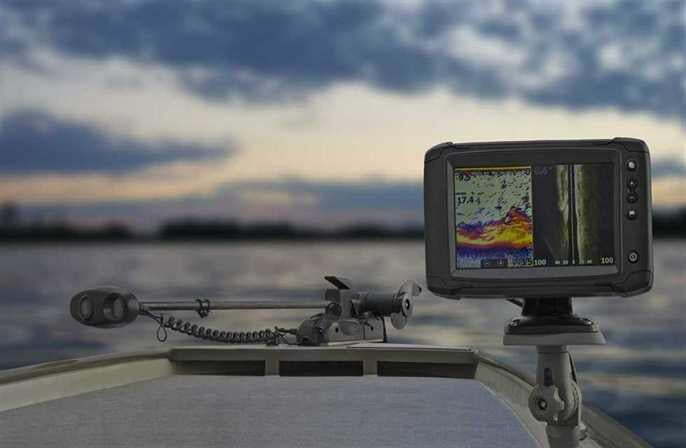 What’s the frequency, Kenneth? That’s what you’d be asking if my name was Kenneth. It’s not, but the question is still a good one. Fish finder transducers usually come with a wide variety of different frequencies - which one is best for each type of fishing? Let’s take a look:
What’s the frequency, Kenneth? That’s what you’d be asking if my name was Kenneth. It’s not, but the question is still a good one. Fish finder transducers usually come with a wide variety of different frequencies - which one is best for each type of fishing? Let’s take a look:
Transducers send out waves of sound into the water. Those waves then bounce off of objects and return to the transducer, which uses a whole bunch of math to translate the returned waves into images. You might think of it a little bit like echolocation. Several factors, like the Doppler effect, have to be accounted for.
For reasons that are a bit too technical to get into here, higher frequencies can lead to more precise images. That means, when you can, your best bet is often to use the highest frequencies available. When you look at imaging technologies, you’ll see that the transducers can often transmit frequencies in the MHz range - that’s the kind of precision you need for clear images.
The problem with high frequencies is that they have very low depth penetration - that means they’re only really suitable for shallow water. You’ll see that most side and down imaging software can’t provide images more than 200 feet out - that’s the cost of precision.
Fortunately, most transducers have a remarkable range of high and low frequencies. You can find transducers that can go as low as 150 kHz and as high as over 1 MHz - all you’ve got to do is change the settings.
Of course, this also means that the deeper you go, the less accurate your transducer is going to be. Fortunately, that makes sense intuitively - it’s harder to track things that are incredibly deep underwater.
As a rule of thumb, use frequencies below 140 kHz when fishing very deep water (over 1500 feet). Between 600 and 1500 feet, frequencies between 100 kHz and 160 kHz tend to work well. For anything 600 feet or shallower, you should use higher frequencies - over 160 kHz.
Realistically, however, choosing a frequency isn’t quite this clean. There are all kinds of things you can adjust on your fish finder - sensitivity is particularly important to adjust if you’re fishing at high frequencies in shallow water with a lot of structure. In the same way that you may need to adjust sensitivity based on things like salinity and temperature, you may find that adjusting your frequency based on water condition, as well as depth, can help.
You should also note that CHIRP sonar is much better than traditional sonar because it can cover multiple frequencies simultaneously. This improves accuracy while still allowing fairly deep water penetration.
There are a variety of different transducers available that can cover you for all kinds of different depths - picking the best one depends heavily on where and how you fish most often. Want to learn more? Check out our fish finder reviews!